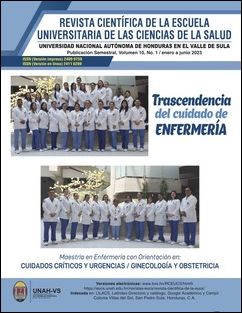Cervical Lesions Relationship: Demographic Factors, Reproductive History, and Screening Tests
DOI:
https://doi.org/10.5377/rceucs.v10i1.17590Keywords:
Reproductive history, colposcopy, uterine cervical neoplasmsAbstract
Cervical cancer is a public health concern in Ecuador and Latin America. This article explores risk factors and screening tests as predictors of cervical lesions. Objectives: To assess demographic factors, reproductive history, and screening tests as predictors of cervical lesions in 1610 womens. Materials and Methods: Records of 1610 women were analyzed, excluding 129 due to incomplete information. Statistical analyses, such as Pearson's Chi-Square test, were used to examine the association between categorical variables. Results were expressed as averages and percentages. Results: 69.4% of the patients had negative results for cervical lesions, while 30.6% had cervical intraepithelial lesions or cervical cancer. Significant relationships were found between high BMI and cervical lesions, as well as between multiparity and these lesions. Furthermore, correlations were identified between multiple sexual partners, sinusorrhagia, and cervical lesions. Colposcopy proved effective in evaluating cytological results. Conclusions: Cervical cancer is a public health problem in Ecuador, with 1,595 cases of cervical cancer and 1,070 cases of cervical intraepithelial lesions in 2021. Factors such as high BMI, multiparity, multiple sexual partners, and sinusorrhagia were significantly related to cervical lesions. No significant relationships were found with other variables. The importance of future research to address limitations, such as the lack of HPV genotyping tests, for a more comprehensive understanding of these cervical pathologies in the Ecuadorian population is emphasized.
Downloads
232




